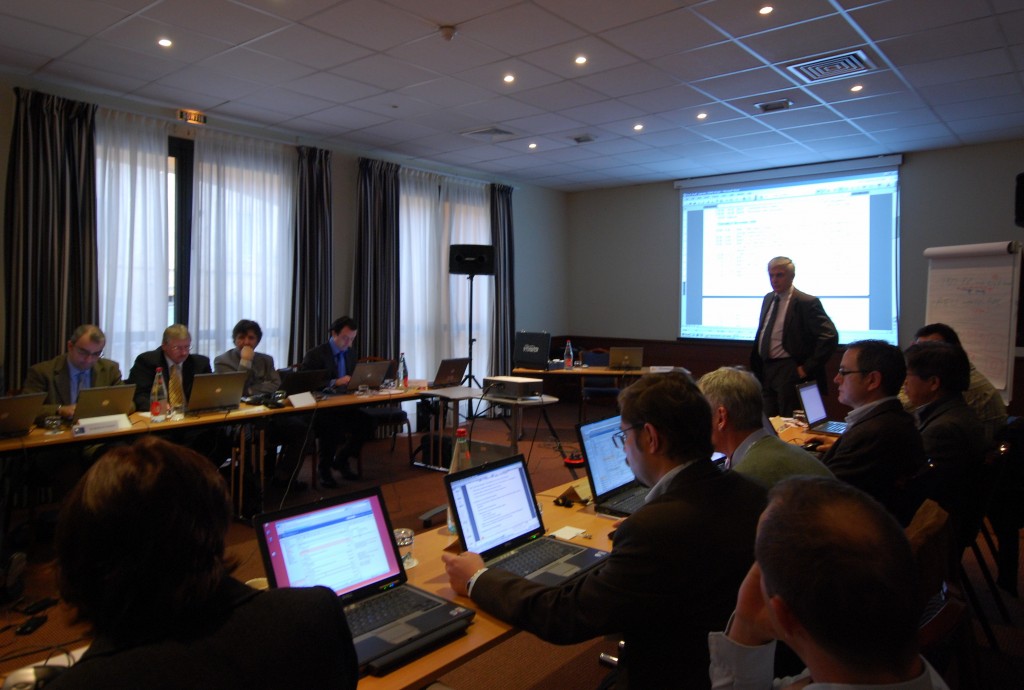ITER NEWSLINE
58
Towards tritium breeding technology
Luciano Giancarli, Chairman of the Test Blanket Working Group and Chief Technical Officer, ITER TBM Program
Towards tritium breeding technology

The 20th Meeting of the Test Blanket Working Group in Aix-en-Provence.
In order to comply with this mission, a Test Blanket Working Group (TBWG) was established by the ITER Director in the early stages of the ITER Project, charged with defining and coordinating the breeding blanket testing program in ITER and acting as a technical forum in support of the Test Blanket Module (TBM) Program.
At its 20th meeting held in Aix-en-Provence in the first week of November 2008, the Test Blanket Working Group focused on the progress made on the establishment of specific safety requirements and on the definition of the interfaces between the ITER machine and the six Test Blanket Systems (TBS) that will be tested in three dedicated equatorial ports. The ITER Organization had presented proposals on how to allocate space in the Tokamak Complex for the test blanket cooling systems, the tritium circuits and the control cubicles.
A preliminary design of the TBM port plugs was also presented together with a proposal for the replacement sequence in the case of replacing the TBM port plug and the ancillary equipment unit via the ITER remote handling devices. As this would require space in the Hot Cell, the creation of two short-term working groups has been discussed to identify the required operations in detail. Moreover, the Working Group addressed the interactions of test blanket modules with the plasma, in particular the expected heat loads on the TBM's first wall and how to minimize the effects of the TBM's ferromagnetic materials triggering magnetic field ripples. The latter could lead to a request to reduce the size of each TBM. All contributing Parties to the TBM program (all ITER Members) were requested to assess the consequences of such a reduction.
The second part of the meeting was dedicated to the integration of the TBM Program into the ITER Research Plan. A preliminary proposal, covering the first ten years of ITER operation, has been prepared and presented by the ITER Organization. The Parties were requested to give their comments within the next three months.
The third part of the meeting addressed the R&D activities performed on TBMs over the last six months by all the Parties. The result: significant progress has been made, in particular in TBM manufacturing processes and TBM mockup fabrication.
At the end of the meeting, representative from ITER and the seven parties went back home with a series of actions to carry out over the next few months.
return to Newsline #58


